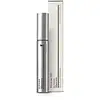What's inside
What's inside
 Key Ingredients
Key Ingredients

 Benefits
Benefits

 Concerns
Concerns

 Ingredients Side-by-side
Ingredients Side-by-side

Water
Skin ConditioningGlyceryl Stearate
EmollientPropylene Glycol
HumectantPvp
Emulsion StabilisingC18-36 Acid Triglyceride
EmollientCetyl Palmitate
EmollientEuphorbia Cerifera Wax
Nylon-12
Stearic Acid
CleansingVp/Eicosene Copolymer
Copernicia Cerifera Wax
Steareth-20
CleansingPersea Gratissima Oil
Skin ConditioningMyristoyl Pentapeptide-17
Skin ConditioningBiotinoyl Tripeptide-1
Xanthan Gum
EmulsifyingPanthenol
Skin ConditioningUrtica Dioica Extract
AstringentBiotin
AntiseborrhoeicTocotrienols
Skin ConditioningAminomethyl Propanol
BufferingSynthetic Fluorphlogopite
Steareth-2
EmulsifyingCyclopentasiloxane
EmollientCaprylyl Glycol
EmollientDimethiconol
EmollientHexylene Glycol
EmulsifyingPhenoxyethanol
PreservativePotassium Sorbate
PreservativeIron Oxides
Mica
Cosmetic ColorantCI 77891
Cosmetic ColorantWater, Glyceryl Stearate, Propylene Glycol, Pvp, C18-36 Acid Triglyceride, Cetyl Palmitate, Euphorbia Cerifera Wax, Nylon-12, Stearic Acid, Vp/Eicosene Copolymer, Copernicia Cerifera Wax, Steareth-20, Persea Gratissima Oil, Myristoyl Pentapeptide-17, Biotinoyl Tripeptide-1, Xanthan Gum, Panthenol, Urtica Dioica Extract, Biotin, Tocotrienols, Aminomethyl Propanol, Synthetic Fluorphlogopite, Steareth-2, Cyclopentasiloxane, Caprylyl Glycol, Dimethiconol, Hexylene Glycol, Phenoxyethanol, Potassium Sorbate, Iron Oxides, Mica, CI 77891
Water
Skin ConditioningSynthetic Beeswax
Emulsion StabilisingParaffin
PerfumingStearic Acid
CleansingAcacia Senegal Gum
MaskingTriethanolamine
BufferingButylene Glycol
HumectantCopernicia Cerifera Wax
Glyceryl Stearate
EmollientPolybutene
Triacontanyl Pvp
HumectantPhenoxyethanol
PreservativeHydroxyethylcellulose
Emulsion StabilisingPotassium Sorbate
PreservativeSodium Dehydroacetate
PreservativeAscorbyl Palmitate
AntioxidantTocopherol
AntioxidantGlycerin
HumectantTourmaline
Rosa Damascena Flower Oil
Masking1,2-Hexanediol
Skin ConditioningCaprylyl Glycol
EmollientBenzoic Acid
MaskingMyristoyl Pentapeptide-17
Skin ConditioningSodium Benzoate
MaskingCI 77491
Cosmetic ColorantWater, Synthetic Beeswax, Paraffin, Stearic Acid, Acacia Senegal Gum, Triethanolamine, Butylene Glycol, Copernicia Cerifera Wax, Glyceryl Stearate, Polybutene, Triacontanyl Pvp, Phenoxyethanol, Hydroxyethylcellulose, Potassium Sorbate, Sodium Dehydroacetate, Ascorbyl Palmitate, Tocopherol, Glycerin, Tourmaline, Rosa Damascena Flower Oil, 1,2-Hexanediol, Caprylyl Glycol, Benzoic Acid, Myristoyl Pentapeptide-17, Sodium Benzoate, CI 77491
Ingredients Explained
These ingredients are found in both products.
Ingredients higher up in an ingredient list are typically present in a larger amount.
Caprylyl Glycol is a humectant and emollient, meaning it attracts and preserves moisture.
It is a common ingredient in many products, especially those designed to hydrate skin. The primary benefits are retaining moisture, skin softening, and promoting a healthy skin barrier.
Though Caprylyl Glycol is an alcohol derived from fatty acids, it is not the kind that can dry out skin.
This ingredient is also used as a preservative to extend the life of products. It has slight antimicrobial properties.
Learn more about Caprylyl GlycolCopernicia Cerifera Wax comes from a palm tree native to Brazil; another name for this ingredient is Carnauba Wax.
This ingredient is used to thicken texture and also leaves behind a film when applied.
Fun fact: This wax has the highest melting point of all natural waxes and low solubility.
Learn more about Copernicia Cerifera WaxGlyceryl Stearate is a mix of glycerin and stearic acid.
It is used to stabilize the mixing of water and oil ingredients. By preventing these ingredients from separating, it can help elongate shelf life. It can also help thicken the product's texture.
As an emollient, it helps soften skin and supports barrier-replenishing ingredients.
In cosmetics, Glyceryl Stearate is often made from vegetable oils or synthetically produced.
This ingredient may not be fungal-acne safe
Fun fact: The human body also creates Glyceryl Stearate naturally.
Learn more about Glyceryl StearateMyristoyl Pentapeptide-17 isn't fungal acne safe and is a peptide.
Phenoxyethanol is a preservative that has germicide, antimicrobial, and aromatic properties. Studies show that phenoxyethanol can prevent microbial growth. By itself, it has a scent that is similar to that of a rose.
It's often used in formulations along with Caprylyl Glycol to preserve the shelf life of products.
Potassium Sorbate is a preservative used to prevent yeast and mold in products. It is commonly found in both cosmetic and food products.
This ingredient comes from potassium salt derived from sorbic acid. Sorbic acid is a natural antibiotic and effective against fungus.
Both potassium sorbate and sorbic acid can be found in baked goods, cheeses, dried meats, dried fruit, ice cream, pickles, wine, yogurt, and more.
You'll often find this ingredient used with other preservatives.
Learn more about Potassium SorbateStearic Acid is a fatty acid. It is an emollient, emulsifier, and texture enhancer.
As an emollient, stearic acid helps soften skin. It aids the skin's protective barrier by preventing water loss. It also provides a gentle cleansing effect without stripping away natural oils.
Stearic acid may also be used to enhance the texture of products. It can add volume and stabilize ingredients such as water and oil. This can help water and oil ingredients from separating.
Sources of stearic acid include animal or vegetable fats/oils such as coconut or shea. It can be naturally found in butter, cocoa butter, shea butter, vegetable fats, and animal tallow.
This ingredient may not be Malassezia folliculitis, or fungal-acne safe.
Learn more about Stearic AcidWater. It's the most common cosmetic ingredient of all. You'll usually see it at the top of ingredient lists, meaning that it makes up the largest part of the product.
So why is it so popular? Water most often acts as a solvent - this means that it helps dissolve other ingredients into the formulation.
You'll also recognize water as that liquid we all need to stay alive. If you see this, drink a glass of water. Stay hydrated!
Learn more about Water